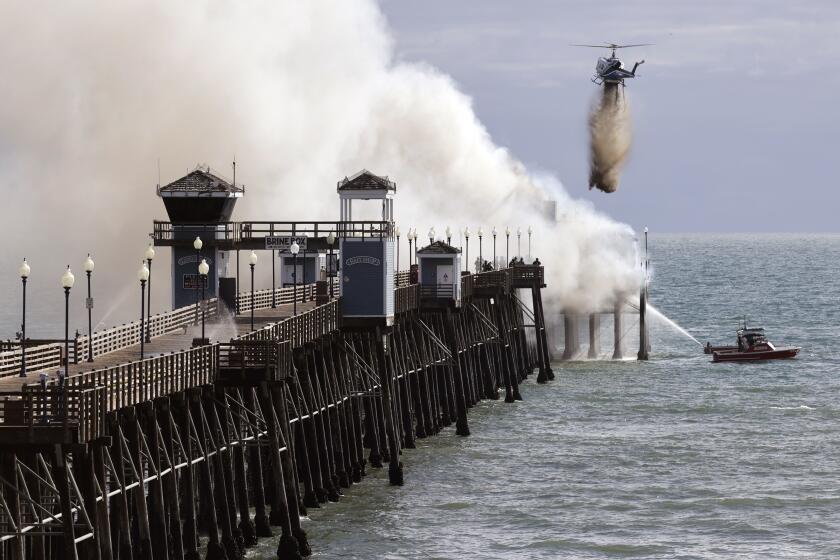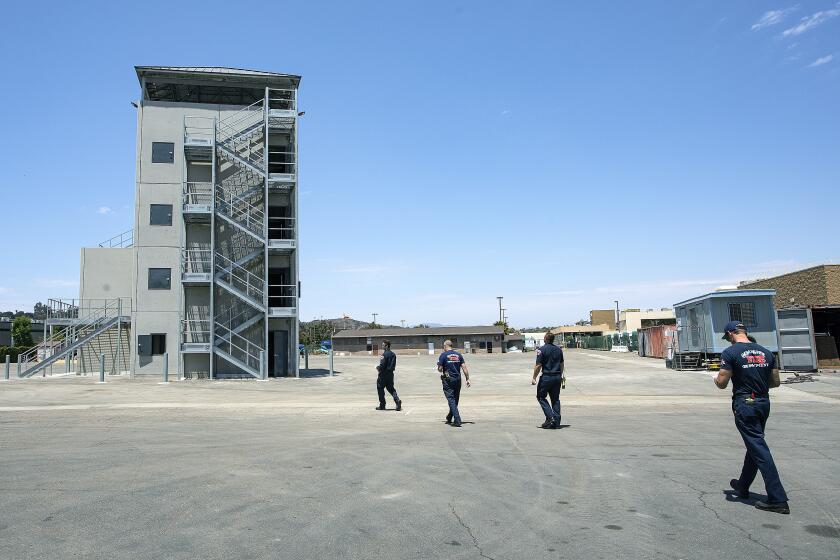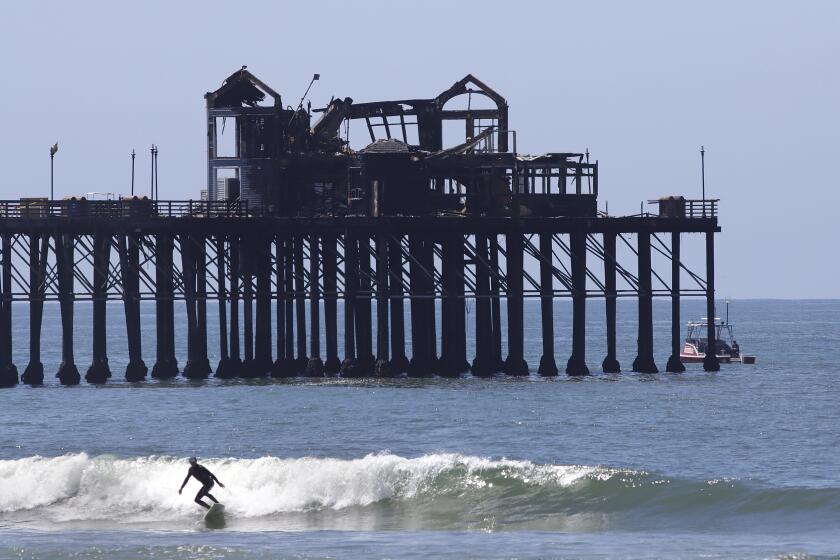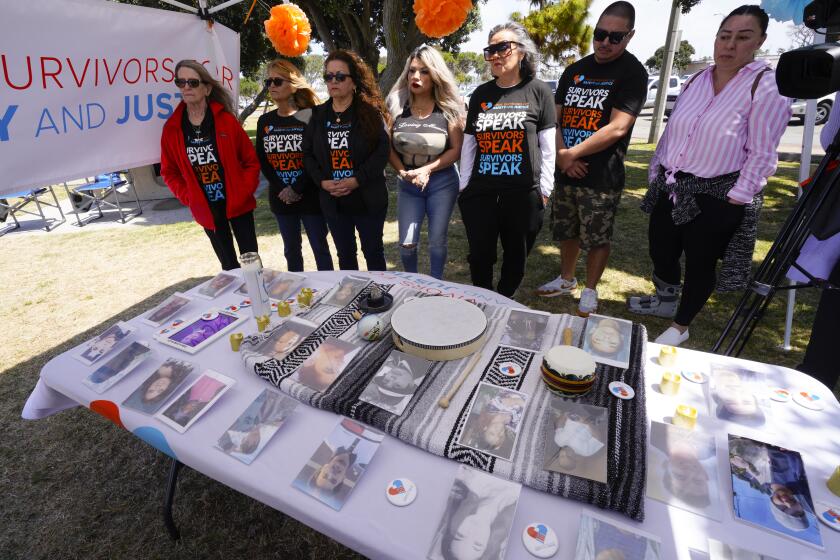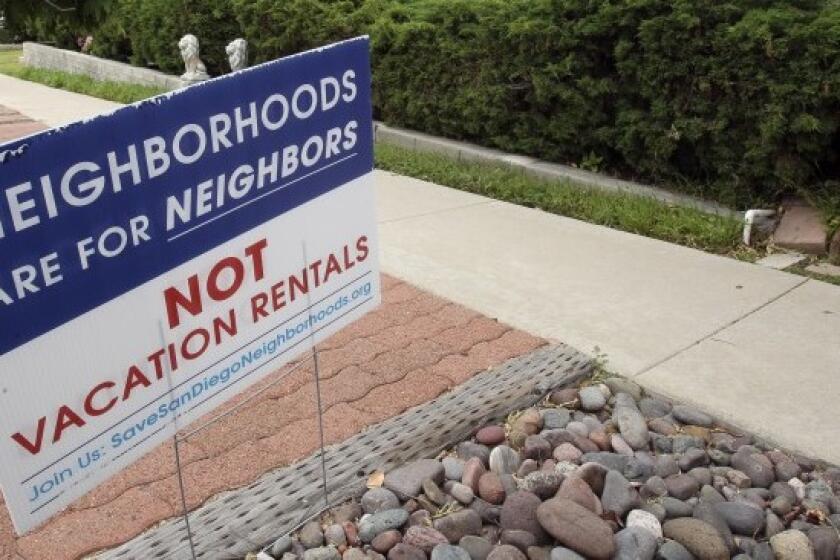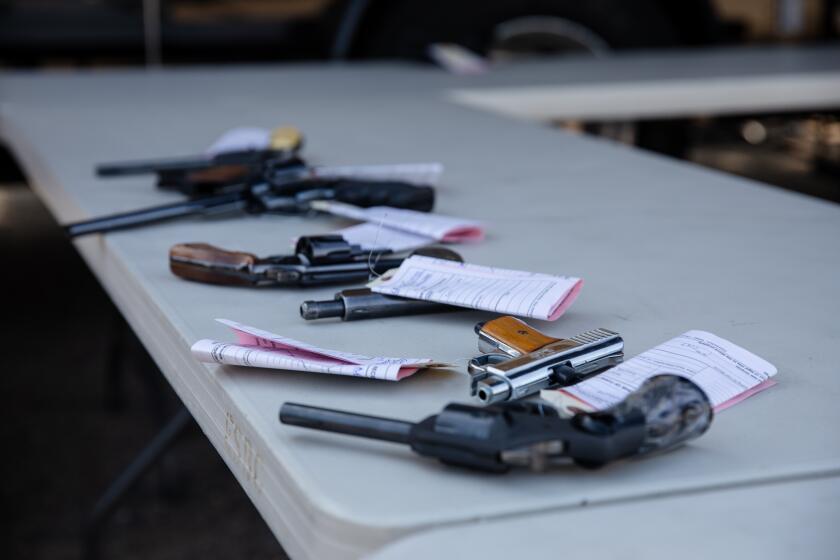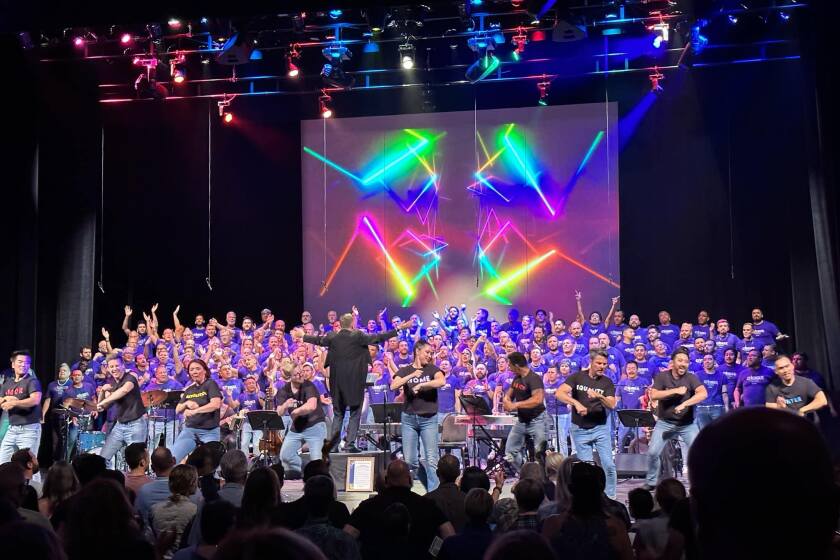Chicano Park returns to roots to commemorate 54 years of spirit
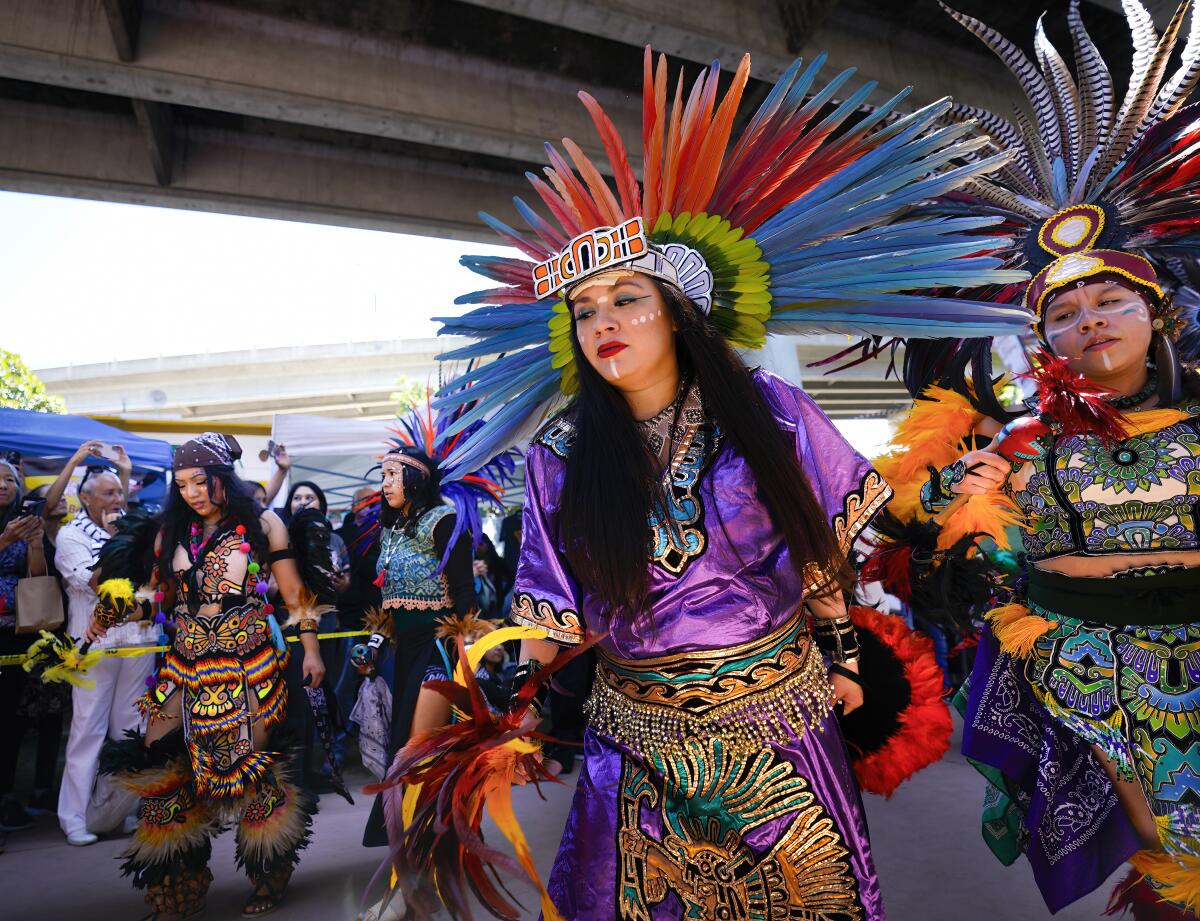
Classic cars, traditional music, dancers & motivational speakers unite multiple generations in a loving community
Barrio Logan returned to its roots Saturday with a joyous commemoration of the birth of Chicano Park, now 54 years ago.
Located beneath a tangle of freeway overpasses, the park reverberated with chest-thumping music and speeches amplified extra loud to drown out the roar of overhead traffic.
Thousands of people wandered among the colorful murals that adorn the block-like support columns. Many visitors came to see the gleaming vintage automobiles brought by dozens of San Diego car clubs.
Some shopped at the booths of vendors selling T-shirts, dresses, hats, beads, jewelry, purses, dolls, candy and craft supplies. Others watched and cheered the steady parade of costumed dancers, musical performers and motivational speakers on the park’s two stages.
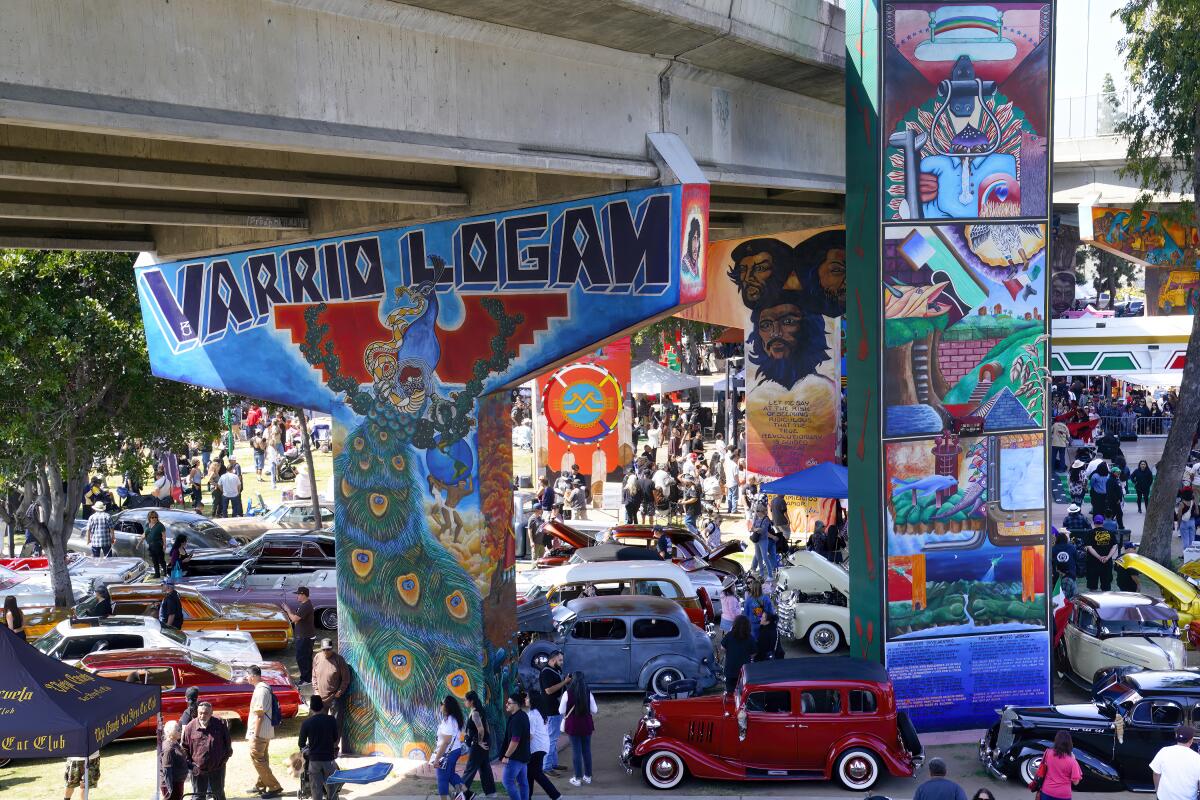
“Bringing back the true spirit and energy of the Chicano Park takeover,” was this year’s theme, chosen by the park’s steering committee.
Chicano activists and Logan Heights residents founded the park April 22, 1970, after months of protests and struggles against the steady, advancing demolition of hundreds of homes to make way for Interstate 5 and the ramps to the San Diego-Coronado Bridge. The final insult was a plan to build a California Highway Patrol office on the property.
“I was only 16 when we took over the park,” said Isabel Enrique Sanchez, the steering committee’s treasurer. Later she was one of the dancers at the park’s opening, where her father brought sheets of plywood to make a dance floor on the ground.
On Saturday, at age 70, she was back again, this time with five generations of her family including grandchildren and great-grandchildren.
“It’s a day of beauty, love and sacrifice,” Sanchez said. “We come together as a community from all over, and we reaffirm why the park was taken over. This was the Indigenous land of our community.”
The event was a little smaller than last year with more of a focus on the park’s origins, said Annie Ross, another committee member.
“It’s a commemoration, not a celebration,” Ross said. “We are commemorating what a community can do.”
Car clubs have been part of the event since its beginning, said two members of the Amigos Car Club, Jose “Shorty” Hinojosa and German Sandoval.
Many of the auto enthusiasts prefer lowriders, classic American cars modified with hydraulic suspensions that will lift the body up off the chassis with the touch of a button or switch. Sandoval said he owns several lowriders, including a Chevrolet Monte Carlo that he bought new in 1980 and within weeks installed the hydraulics.
National City, where Sandoval lives, banned lowriders in the 1990s, citing concerns of violence and crime, though that hardly stopped most owners. The ruling was reversed just last year at the urging of advocacy groups.
“In the 1980s the cops would harass you” for driving a lowrider, he said. “They’d say, ‘Get out of here, or we are going to tow your car.’”

Another car enthusiast, Hector Vidaña, brought his 1936 Chevrolet Master to display at the show. It’s not a lowrider, but more of an antique.
“I got it three years ago,” said Vidaña, a lifelong resident of Logan Heights. “It had been in a barn in Kansas City since 1968.”
He’s done a lot of work on the car since he got it. He replaced the motor with a rebuilt one from a 1955 Chevy. He added fresh, diamond-bright chrome plating to the bumpers and the distinctive “pine needle” grill. He switched out the original steering wheel for a more stylish “banjo” shape popular in the ‘30s, and added other touches inside, including a brass compass made in 1928 that he placed on the windshield above the dash.
One of the car’s many distinctive qualities is its exterior paint, or lack of it. The blue-gray shade appears to be the original, and proudly wears spots of rust, fading and scratches. However, the paint job has an amazing patina that can only be acquired with age. Vidaña said he likes it that way.
“This is my project car... my driving around car” he said. “I’ve got three others.”
Chicano Park Day’s keynote speaker was Herman Baca, who moved with his family to National City from New Mexico in the 1950s.
A fiercely independent Chicano activist, Baca helped organize a National City chapter of the Mexican American Political Association in 1968 and served as its president and the San Diego County director of MAPA’s southern region until 1974.
Entertainment included the Ballet Folklorico Xochipilli de San Diego, Grupo Fólklorico Alma Del Barrio, Mariachi Augila, Mariachi Internacional San Diego, and poetry by members of Firme Voices Poetry.
Chicano Park was designated a National Historic Landmark in 2016.

